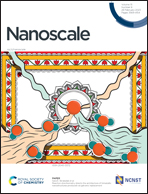Trends in energy and charge transfer in 2D and integrated perovskite heterostructures
Abstract
Two-dimensional (2D) van der Waals (vdW) heterostructured transition metal dichalcogenides (TMDs) open up new possibilities for a wide range of optoelectronic applications. Interlayer couplings are responsible for several fascinating physics phenomena, which are in addition to the multifunctionalities that have been discovered in the field of optoelectronics. These couplings can influence the overall charge, or the energy transfer processes via stacking, separation, and dielectric angles. This focused review article summarizes the most recent and promising strategies for interlayer exciton emission in 2D or integrated perovskites and TMD heterostructures. These types of devices require a thorough comprehension and effective control of interlayer couplings in order to realize their functionalities and improve performance, which is demonstrated in this article with the energy or charge transfer mechanisms in the individual devices. An ideal platform for examining the interlayer coupling and the related physical processes is provided by a summary of the recent research findings in 2D perovskites and TMDs. Furthermore, it would encourage more investigation into the comprehension and regulation of excitonic effects and the related optoelectronic applications in vdW heterostructures over a broad spectral response range. Finally, the current challenges and prospects are summarized in this paper.

- This article is part of the themed collection: Recent Review Articles


 Please wait while we load your content...
Please wait while we load your content...